Until 2014, Crimea was one of the main centers of space exploration in Ukraine. It was home to many optical telescopes and antennas capable of receiving signals from both astronomical objects and spacecraft. All these unique instruments are now under occupation.
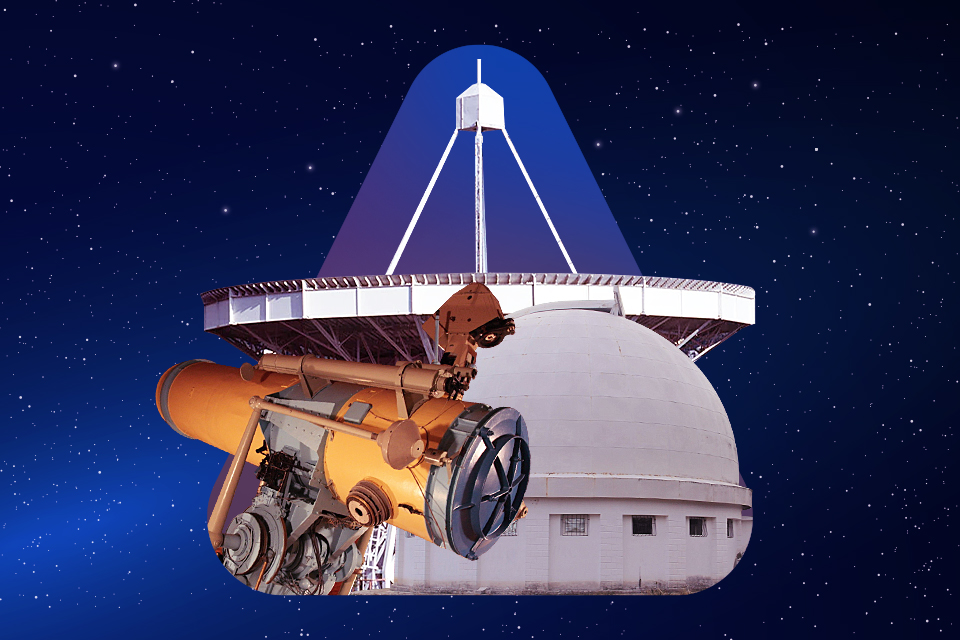
Crimea is a pearl of Ukrainian astronomy
The Autonomous Republic of Crimea is a special region of Ukraine, famous for its unique ancient history and diverse ethnicity. It is also distinguished by its climate and developed tourism.
Meanwhile, all Ukrainian space enthusiasts know it as the location of important scientific centers, thanks to which astronomers from all over Ukraine could study the wonders of the universe. Unfortunately, in 2014, Russia illegally occupied the peninsula, and all these scientific instruments became its prey.
Each of these telescopes deserves to be mentioned at least in short. All of them operated as part of the Crimean Astrophysical Observatory, which began as a small observation station built near Simeiz in the early twentieth century and quickly became famous. In particular, in 1926, one of the largest reflector telescopes in Europe at the time, with a mirror diameter of 1 meter, was installed there.

It was at the Simeiz Observatory in 1925 that Hryhorii Abramovych Shaino, a native of Odesa, discovered asteroid 1709. In 1967, it was named “Ukraine”.
During World War II, the Simeiz Observatory was almost completely destroyed. However, it was later restored, and now several instruments are installed on Mount Kosh-Kaya near Simeiz. The name of the Mount is translated as “the double peak” from Crimean Tatar language. By the way, this peak on the Black Sea coast is often nicknamed “Cat” by the locals due to the form of the mount which.
Two reflector telescopes manufactured by the German company Carl Zeiss are installed on Mount Kosh-Kaya. One of them has a mirror diameter of 600 mm, and the other has a diameter of 1000 mm. There is also a photographic camera with a mirror diameter of 43 cm and several laser rangefinders, the most prominent of which is KRIM, or Simeiz-1873.
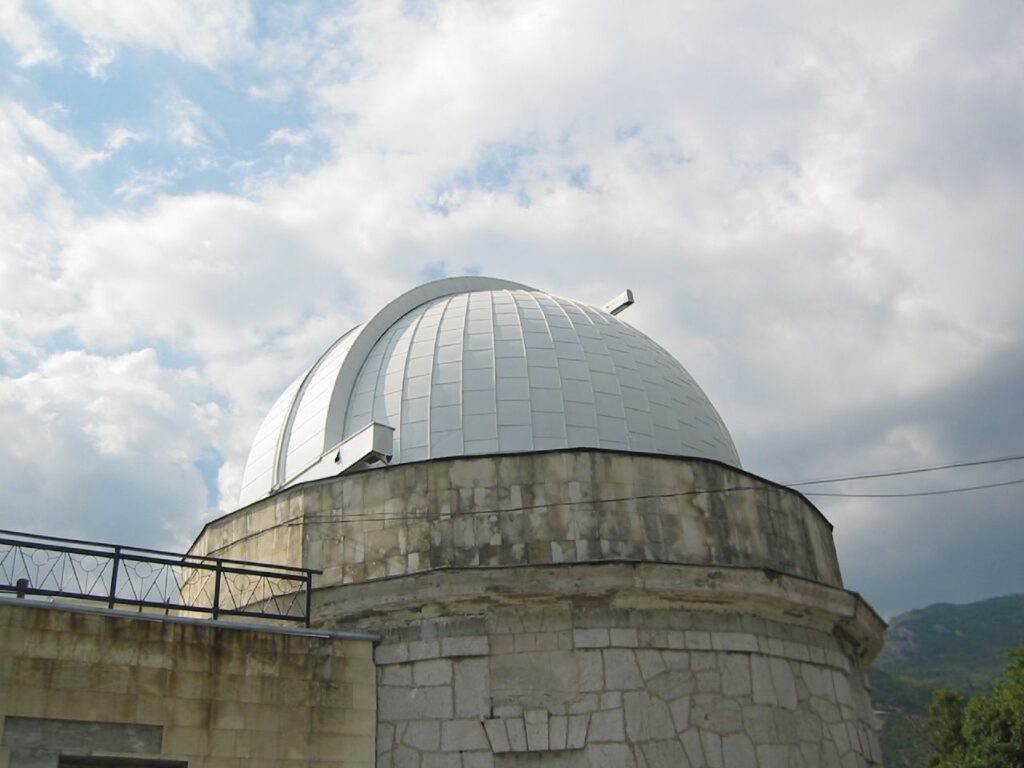
The latter device was used to track satellites in orbit. It directed a laser pulse at them and, having received the reflected signal, determined the distance to them with high accuracy, and thus the altitude at which they were moving.
The largest telescopes of the Crimean Astrophysical Observatory
After World War II, it was decided to expand the Simeiz Observatory by creating a new site for it and equipping it with more powerful instruments. This was the birth of the Crimean Astrophysical Observatory (KAO), which now organizationally includes the facilities on Mount Kosh-Kaya.
The new site was located in the village of Naukove, 12 km from the city of Bakhchisarai, the former capital of the Crimean Khanate. Numerous astronomical instruments were installed on the southern slope of Mount Sel-Bukhra.
The fact that even before the illegal annexation of the peninsula, a company associated with local officials tried to take away the observatory’s land to build a hotel complex is a clear indication of how wonderful this place is. After the occupation of Crimea, these people joined the service of Russia and continued their encroachment.
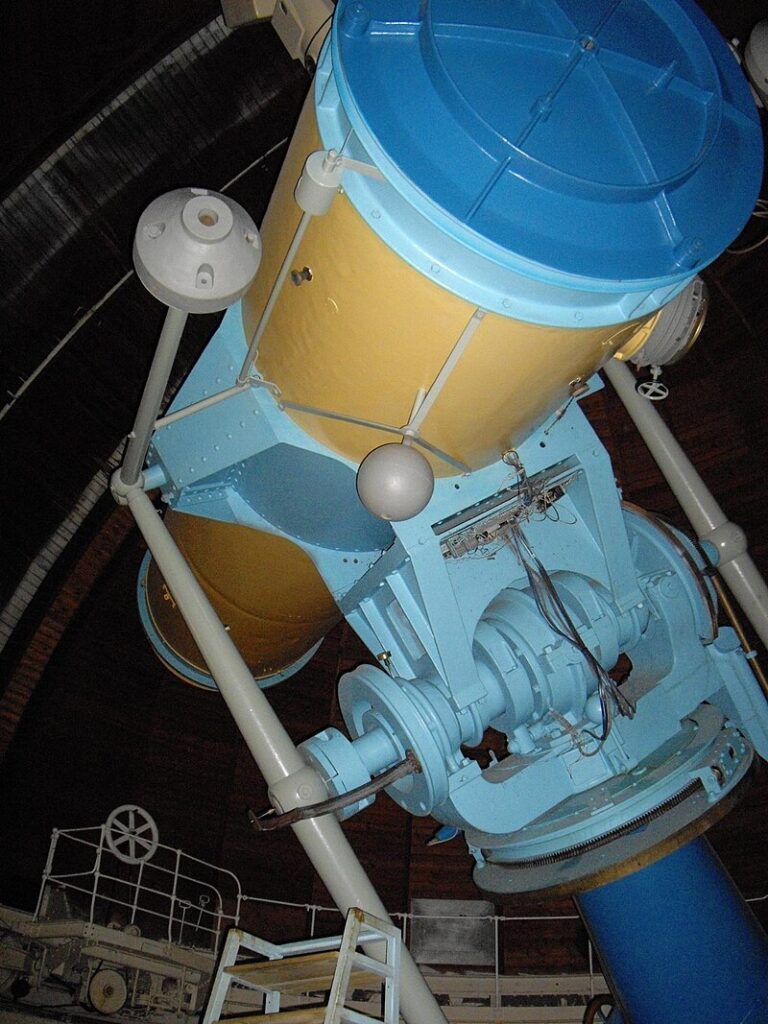
The first instruments of the observatory were two telescopes that the Soviet Union received from Germany in the form of reparations. To translate this into a clear language, the USSR took them out of the country occupied by its troops. Interestingly, the first of them was an astrograph, the production of which was paid for by Adolf Hitler himself. He wanted to give this reflector with a mirror diameter of 400 mm to his friend Benito Mussolini, but in the end, the telescope went to his former friend Joseph Stalin. So in 2014, it was stolen for the second time.
The second telescope that the USSR received from Germany and which is still located in the Kryvyi Rih is a reflector made by the aforementioned Carl Zeiss company with a mirror diameter of 1220 mm. It is known mainly for the fact that in 1958, Nikolai Kozyrev allegedly used it to observe the release of volcanic gases in the lunar crater Alphonse. This controversial study is one of the few that indicate that the interior of our natural satellite is still active.
However, these instruments are not the largest in the occupied Crimea. In 1960, the Shine Mirror Telescope with a main mirror diameter of 2.64 meters was built here. It was named after the aforementioned astronomer, who was the director of the observatory and one of the initiators of its creation.
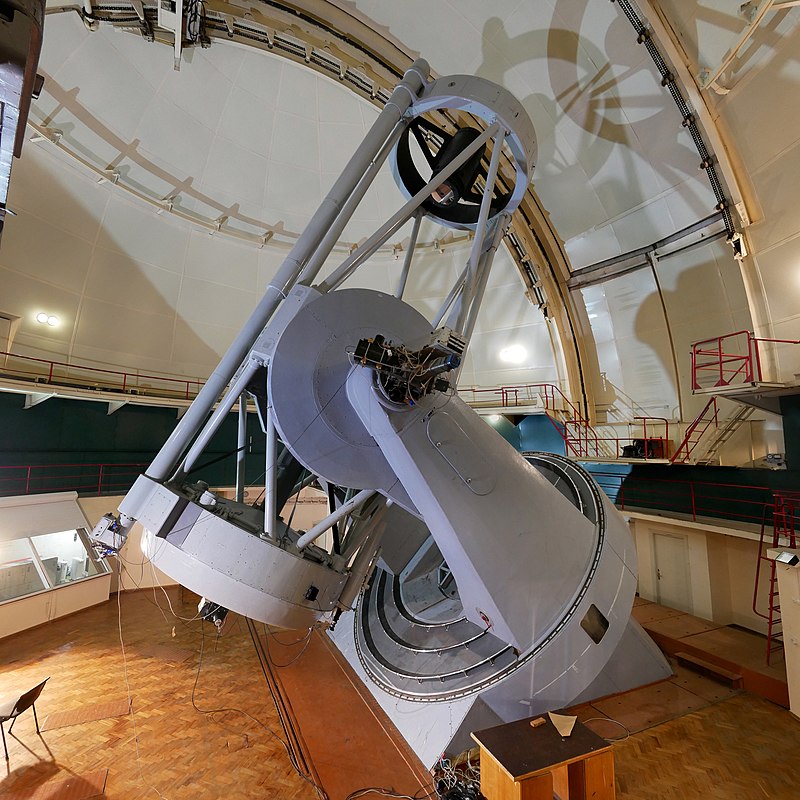
At the time of its completion, this telescope was the third largest in the world, second only to two American telescopes. Until 2014, it remained the most powerful optical instrument available to Ukraine.
In addition to the above-mentioned instruments, there are a number of other optical instruments with mirror diameters ranging from 38 to 125 cm. Among them, telescopes designed to observe the Sun are particularly noteworthy. The largest of them, the Large Solar Telescope, has a fixed mirror with a diameter of 1200 mm.
There is also an interesting telescope AST-1200, or Synthesis, located on the territory of the Kryvyi Rih. Work on it began in the 1970s. At that time, Soviet scientists tried to create a system of flat mirrors that could move and together form a parabolic surface of a certain curvature.
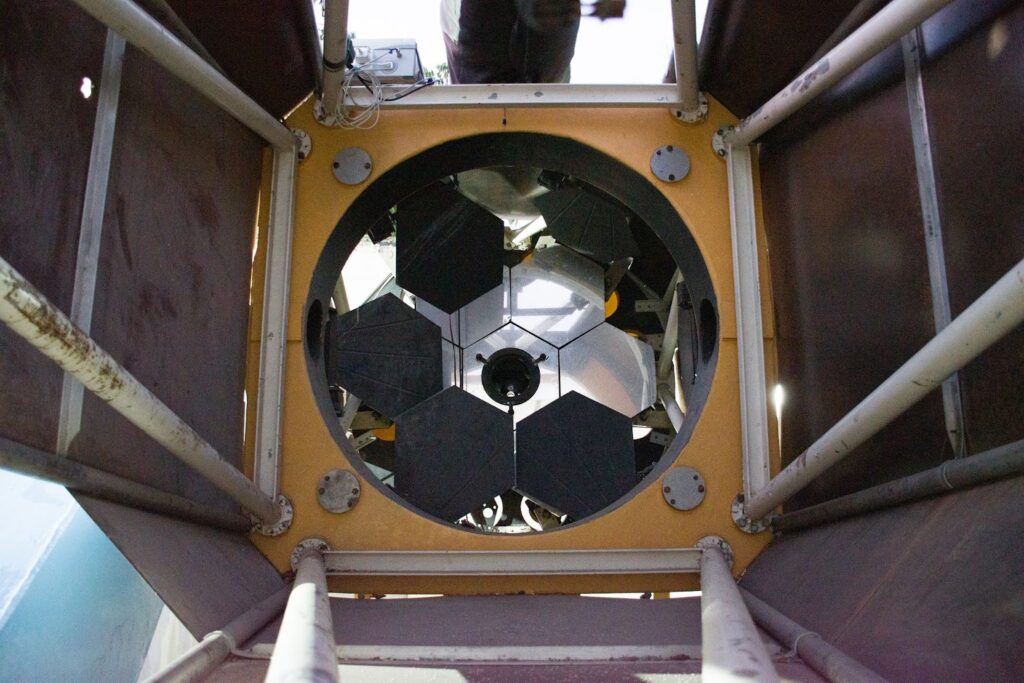
Such systems are now widely used on various large telescopes. However, Soviet engineers failed to cope with this task at the time, and their astronomical instrument has been in a mothballed state for several decades.
Crimean radio telescopes
In addition to astronomical instruments operating in the optical range, there are many radio telescopes in Crimea. The largest of those belonging to the Crimean Array is RT-22 in Simeiz. The diameter of its “dish” is 22 meters.
The astrophysical observatory also has two telescopes operating in the gamma-ray range. One of them, commissioned in 1989, is called GT-48. This is the so-called Cherenkov telescope. The peculiarities of its operation are related to the fact that the Earth’s atmosphere almost does not transmit high-energy particles of cosmic rays. Nevertheless, their collisions with air atoms generate a whole cascade of reactions that lead to the formation of secondary radiation. It is this radiation that is collected by 48 GT-48 spherical mirrors and directed to the cameras.

By studying the secondary radiation, scientists can understand what particles generated it. And they often come to us from very interesting places, such as black holes or active galactic nuclei.
However, most of the radio telescopes or antennas that can be used for astronomical observations are located at the National Space Facilities Management and Testing Center (NSMTC) in the village of Vitino near the city of Yevpatoria, also known by its Crimean Tatar name, Kezlev. The center was founded in 1960 by Zhytomyr-born Sergei Pavlovich Korolev for the needs of the Soviet space program.
Since independence, the NSMTC has been used primarily in civilian space exploration programs. However, the Russians, who occupied Crimea in 2014, handed it over to the military and now they call it the “40th Separate Command and Measurement Complex of the Russian Aerospace Forces.”
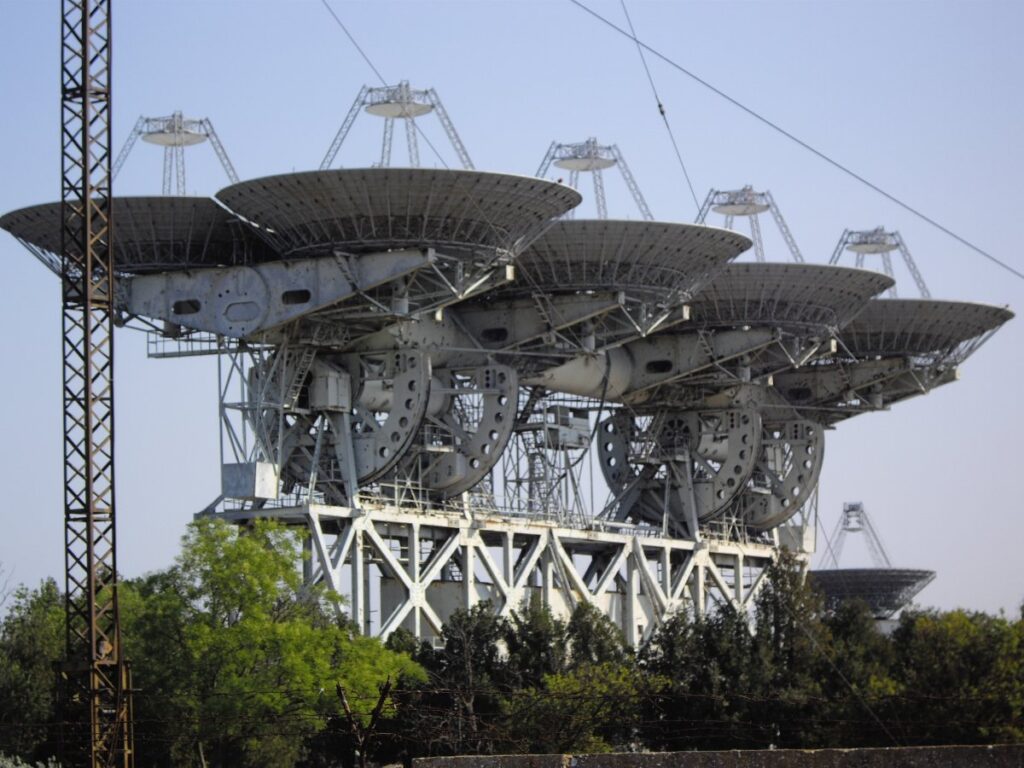
The first set of radio equipment at the Yevpatoria Space Communications Center was the ADU-1000 installation, which was able not only to receive but also to emit signals. It started operating in 1960. It consisted of three separate antennas: one transmitting and two receiving. Unfortunately, only the latter two antennas are left today.
Each of these antennas consists of eight parabolic “dishes” with a diameter of 16 meters, mounted on a common frame in two rows of 4 pieces. Interestingly, this entire structure is rotated by drive mechanisms removed from the Stalingrad-type cruisers and it stands atop the hulls of two submarines.
The main task of the ROV-1000 throughout all the years of its use was to provide communication with automatic interplanetary vehicles. The first probes of the Venus and Mars series were controlled using this particular antenna. However, it was also used for radar studies of the planets of the Solar System, “listening” to the radiation of the Sun and radio sources in deep space.
And in 1962, the ADU-1000 radio telescope near Yevpatoria sent the first message to extraterrestrial civilizations into space. Its initial target was Venus, but in fact the signal was only partially reflected from Venus and then traveled into interstellar space. The message began with the word “Peace” transmitted in Morse code. But since this all took place in the Soviet Union, it was followed by “Lenin” and “USSR,” so it’s hard to say what the alien beings would think if they actually received it.
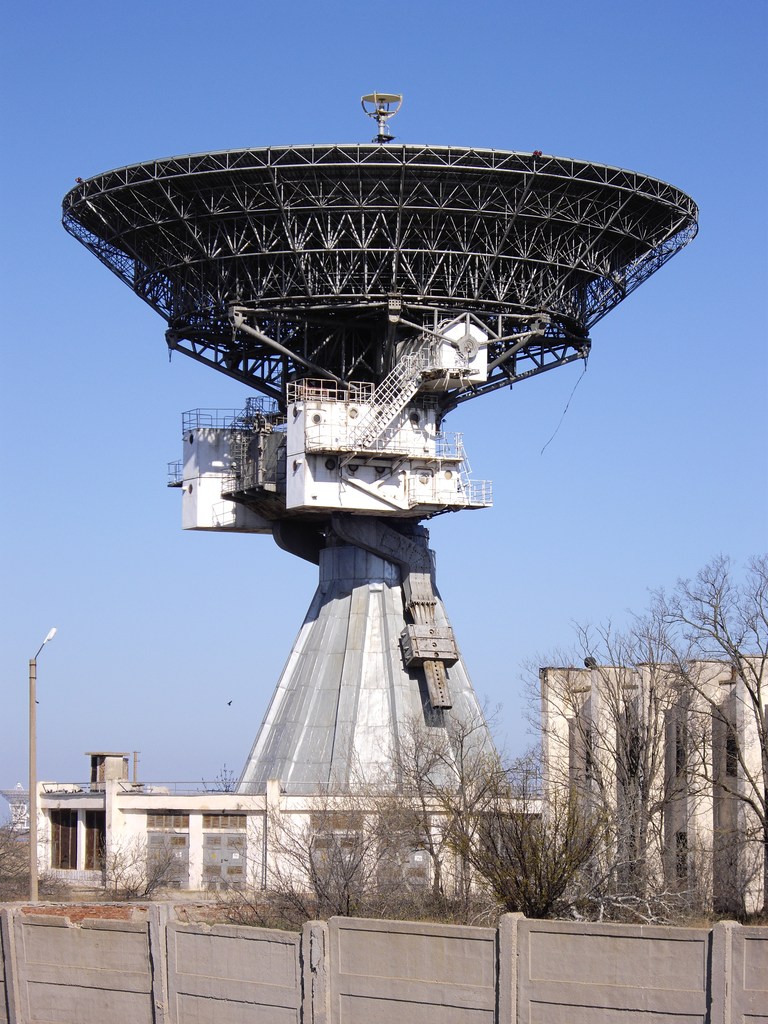
The P-400P radio telescope is a single rotary antenna with a mirror diameter of 32 meters. It is also capable of both receiving and emitting radio waves. Before the occupation, it was planned to use it to detect dangerous asteroids.
An antenna for communication with aliens
However, the P-400P is not the largest radio telescope that Russia stole from Ukraine along with Crimea. In fact, it is RT-70, also known as P-2500. It was put into operation in 1978. It is a dish-shaped antenna mounted on a rotary device and capable of both receiving and transmitting signals. It has a diameter of 70 meters and an area of almost 13 tennis courts.
The main task of RT-70 at the time of its commissioning was to provide communication with spacecraft. Later probes of the Venus program, Vega-1, Vega-2, Phobos-1, Phobos-2, Mars-96, and even Phobos-Grunt, all of which were communicating or planned to communicate using this radio telescope.
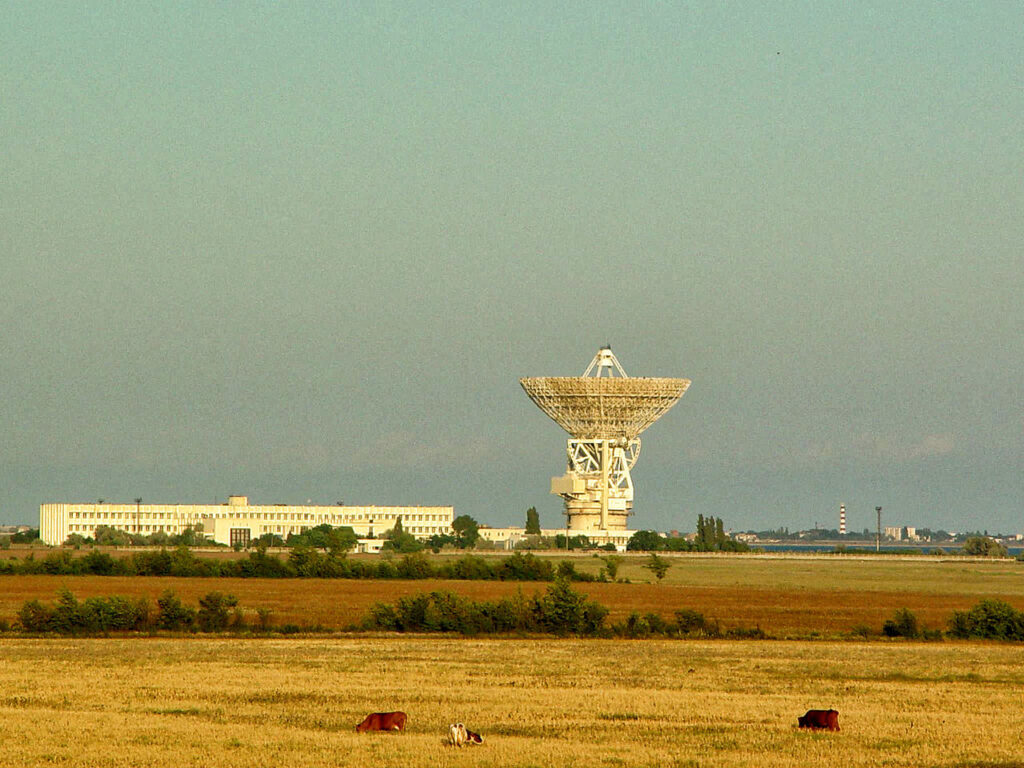
However, it is not known for this, but for the fact that it was from this telescope that most messages to alien civilizations were sent into space. First, in 1999, signals were sent from it to six different stars as part of the Cosmic Call 1 project, then in 2001 there was a children’s message that also flew to 6 different stars.
In 2003, Cosmic Call 2 was implemented. Then messages from Earth were sent to five more “space addresses,” including the star 55 Cancer, around which at least one planet in the “habitable zone” orbits.
Finally, in 2008, a message was sent from RT-70 to the Gliese 581 star system. There may be even more habitable planets in this system. In all cases, the messages, unlike the Soviet ones, contained not only words but also photos and videos. Ordinary people from different parts of the world took part in their compilation.
And now this unique radio telescope is in the hands of the Russian military, which has begun to use it for their own needs and purposes. The aggressor country did not even allow its own scientists to work with it. For the first time after the occupation of Crimea, they were given the opportunity to use RT-70 only in 2022, when other ways of obtaining information from spacecraft were blocked due to the large-scale invasion of Ukraine.
The signal sent from RT-70 will reach Gliese 581 in 2029. If there are intelligent beings there, they will be able to understand it and send a response. It will reach Earth in 2050-2051. We can only hope that it will be received on the same radio telescope from which it was sent, and that it will be done by Ukrainian scientists.

